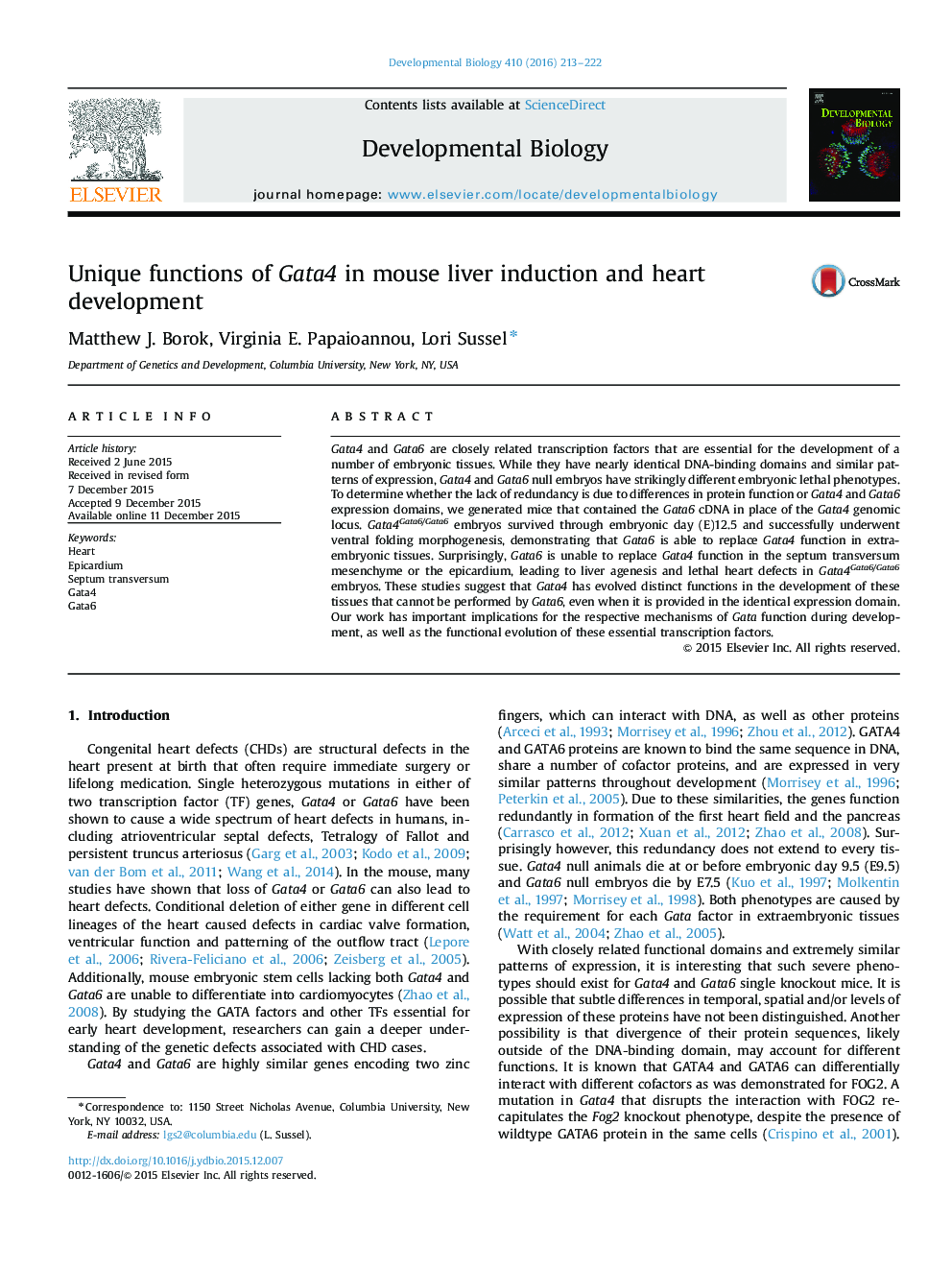| کد مقاله | کد نشریه | سال انتشار | مقاله انگلیسی | نسخه تمام متن |
|---|---|---|---|---|
| 2172802 | 1549564 | 2016 | 10 صفحه PDF | دانلود رایگان |

• Gata6 can partially rescue Gata4 function during embryonic development.
• Gata6 is able to substitute for Gata4 function in extraembryonic tissues.
• Gata6 cannot replace Gata4 in the septum transversum mesenchyme or proepicardium.
• Gata4Gata6/Gata6 embryos mdie with liver agenesis and lethal heart defects.
Gata4 and Gata6 are closely related transcription factors that are essential for the development of a number of embryonic tissues. While they have nearly identical DNA-binding domains and similar patterns of expression, Gata4 and Gata6 null embryos have strikingly different embryonic lethal phenotypes. To determine whether the lack of redundancy is due to differences in protein function or Gata4 and Gata6 expression domains, we generated mice that contained the Gata6 cDNA in place of the Gata4 genomic locus. Gata4Gata6/Gata6 embryos survived through embryonic day (E)12.5 and successfully underwent ventral folding morphogenesis, demonstrating that Gata6 is able to replace Gata4 function in extraembryonic tissues. Surprisingly, Gata6 is unable to replace Gata4 function in the septum transversum mesenchyme or the epicardium, leading to liver agenesis and lethal heart defects in Gata4Gata6/Gata6 embryos. These studies suggest that Gata4 has evolved distinct functions in the development of these tissues that cannot be performed by Gata6, even when it is provided in the identical expression domain. Our work has important implications for the respective mechanisms of Gata function during development, as well as the functional evolution of these essential transcription factors.
Journal: Developmental Biology - Volume 410, Issue 2, 15 February 2016, Pages 213–222